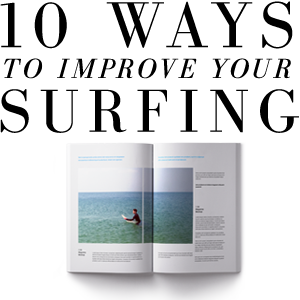

Ahh, offshore wind. It does beautiful things for waves. But in this case we’re talking about RIPPING offshore wind and the three ways it makes catching waves much harder.
Bet you easily know the first way, but what about the other two consequences of a ripping offshore wind?
1. Paddling Against the Wind
The obvious one. Just the simple fact that you’re trying to paddle in the opposite direction the wind is blowing means it’s going to take more work to get the job done and catch the wave.
The wind will be getting under the nose of your board as you’re taking-off on a wave making matters harder. And if you tend to position yourself too far back on your board in general, you’re going to find it exponentially more challenging to catch waves with that positioning in strong offshores.
The wind is blowing the water in your face and so many times you’ll be blind while you paddle. Once you can finally see again you’ll probably just be tipping over the ledge and getting your first look at the drop as you’re making it.
2. Wave Against the Wind
If the wind is holding you back, why would it be any different for the waves?
Strong offshores hold the wave back and lift them ever higher than any other wind condition. They get taller, and thinner, and take longer to break.
That means your timing needs to change. A wave that looks like its about to break may still be moments away from breaking if the wind it holding back the lip. You’ll realize once it’s too late that you should have started paddling sooner.
It’s important in strong offshore winds to start paddling for waves early especially if you’ve already been affected by point three.
3. You Get Blown Out to Sea
You may not realize it because the crowd is getting blown out to sea with you, but the fact of the matter is while you’re sitting there waiting for waves in strong offshore wind–you’re getting pushed out to sea.
That means pushed out of position.
If you’re not actively monitoring your position while you wait for waves in a honking offshore wind, you can bet you’re going to be fighting to get inside fast when you see a set rolling in and it’s far from breaking.
Don’t forget, you’ll be fighting against the wind from too far outside to catch a wave that’s going to develop for longer. The odds are stacking.
It takes a diligent surfer to not only patiently wait for sets, but also actively hold their position in the line-up. A good surfer will always be mindful of their position, both in and out to sea, and up and down the beach.




